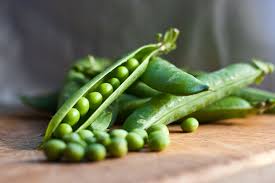|
Ozark Green Thumb BCMG Monthly e-Newsletter |
|
|
 Peas are everyone's garden favorite. There's nothing like the taste of fresh sweet peas in spring. Here's some history and tips on planting peas. A Brief History of Peas: Northerners and southerners have different ideas about the meaning of the word "pea." To southerners, peas are black-eyeds, crowders and creams; to northerners, these same varieties are known as shell beans. The northern version of "peas" is known as English or green peas, and if you ask home gardeners to name their favorite vegetable, many will say green peas. Garden peas originated in western Asia and Eastern Europe. We know they existed as far back as the Stone Age, because dried pea seeds were discovered among relics in lake villages of Switzerland. Apparently 1,000 years ago the pea, which was small and dark colored, was grown only for its dried seeds. At the turn of the millennium, people started eating them fresh, too. The popularity of peas increased during the 18th century. The Anglo-Saxon word for peas was "pise," later to be called "pease," but nobody knew whether that referred to one pea or many. So, the word "peas" was coined. Because our green garden peas were derived from varieties that thrived in England, they are called "English peas." Planting Peas When you're deciding where to plant which vegetable, there are two good reasons why it's a good idea to locate your peas in a section that receives full sun:
No matter what size your garden, you'll have the best results if you plant peas in 16-inch-wide rows with walkways at least the same width. Not only will you harvest more, but you'll put less time and work into your crop. For most varieties, if you plant in wide rows there's no need to build trellises or fences for support, because the vines hold each other up. Also, wide-row vines form a living- mulch canopy that helps to eliminate weeds and keeps the soil cool and moist. When To Plant Peas Peas are a cool-weather crop that can withstand frost. Northern gardeners can often plant their first crop near the end of March, as soon as the garden has thawed and the soil can be worked. A few varieties, however, are happier being planted when it's warmer and harvested during midsummer. Seed catalogs and packets indicate the preferred time for planting different varieties. In the Far North, garden peas can be harvested almost all summer if you use a little ingenuity. Plant peas every three to four weeks for a continual summer harvest. Once you've harvested your first crop of peas, pull out and compost the vines or till them in and replant a second crop of peas in the same space. Or you can plant another short-season vegetable. In the West, gardeners can harvest peas year-round; in the South they're best if grown in the fall, winter and very early spring before the weather gets too hot. Source: National Garden Association
0 Comments
Leave a Reply. |
Archives
April 2022
|
|
